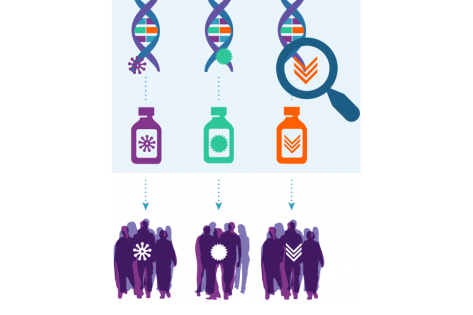
NCI-MATCH Eliminates the Need for a Formal Referral Letter from the Laboratories
September 30, 2021
From the Co-Chairs, September 2021
September 30, 2021Now Enrolling: Phase II of EA9152 for Acute Lymphoblastic Leukemia

EA9152 – A Phase Ib/II Study of Venetoclax (ABT-199) in Combination with Liposomal Vincristine in Patients with Relapsed or Refractory T-cell or B-cell Acute Lymphoblastic Leukemia
The study chair for this trial is Neil Palmisiano MD, MS (Thomas Jefferson University/Sidney Kimmel Cancer Center). The study co-chair is David Claxton, MD (Penn State Cancer Institute).
Despite the fact that multi-agent chemotherapy regimens induce remissions in greater than 90% of adults with acute lymphoblastic leukemia (ALL), only a minority of patients are cured. Five-year survival rates approach just 40%. The current strategy for patients after relapse is additional multi-agent chemotherapy aimed at inducing a complete remission, so that an allogeneic stem cell transplant may be performed. Unfortunately, complete remission only occurs in 20% - 30% of cases, leaving many without the option of transplant. Better therapies are needed for patients with this disease.
Phase II of the EA9152 study activated in July. The primary objective of this single-arm, open label trial is to validate the preliminary efficacy of the combination of venetoclax, a targeted therapy, and liposomal vincristine chemotherapy in patients with B-ALL or T-ALL. Secondary endpoints include progression-free survival, overall survival, and toxicity.
Patients are eligible for the study if they have relapsed or refractory B-cell or T-cell ALL, including lymphoblastic lymphoma, after multi-agent chemotherapy. All patients who enroll will receive venetoclax and liposomal vincristine for six weeks. Patients will undergo a bone marrow biopsy on day 28, and those whose disease is at least stable will receive a second 28-day cycle of the combination therapy.
Patients with progressive disease will discontinue treatment. A bone marrow biopsy will be performed again at day 56, and patients whose disease is at least stable may remain on combination therapy until disease progression or withdrawal from the trial. At the discretion of the treating physician, a patient who achieves complete remission or complete remission with incomplete hematologic recovery may proceed to hematopoietic stem cell transplantation at any time.
Early clinical experience with the drug venetoclax has demonstrated its efficacy in a variety of hematologic malignancies, some leading to FDA approvals. It remains experimental for ALL. Venetoclax is a highly selective, orally bioavailable inhibitor of the B-cell lymphoma-2 (BCL-2) protein. The use of venetoclax in combination with chemotherapy in ALL is promising, as BCL-2 inhibition may lower the apoptotic threshold of a cell. Work to date with BH3 protein profiling of primary B-ALL and early precursor T-ALL cells has demonstrated the BCL-2 dependence of these subtypes. Additionally, researchers have produced preclinical data showing synergy with other BH3-mimetic drugs and an array of chemotherapy agents, including vincristine, in T-ALL and B-ALL.
Vincristine sulfate liposome injection is a lipid-encapsulated nanoparticle formulation of vincristine, and was developed to have an improved pharmacokinetic and side effect profile over vincristine. Liposomal vincristine is approved by the FDA for ALL in second or greater relapse. The drug was reviewed under the agency’s accelerated approval program, and a phase II trial showed its efficacy, even for patients who had previously been exposed to vincristine.
Toxicity of the combination will be evaluated. It is known that venetoclax and liposomal vincristine do not have overlapping toxicity profiles.
Learn more about EA9152 at ecog-acrin.org.
![ECOG-ACRIN logo[19516]275×75](https://blog-ecog-acrin.org/wp-content/uploads/2021/03/ECOG-ACRIN-logo19516275x75.png)
